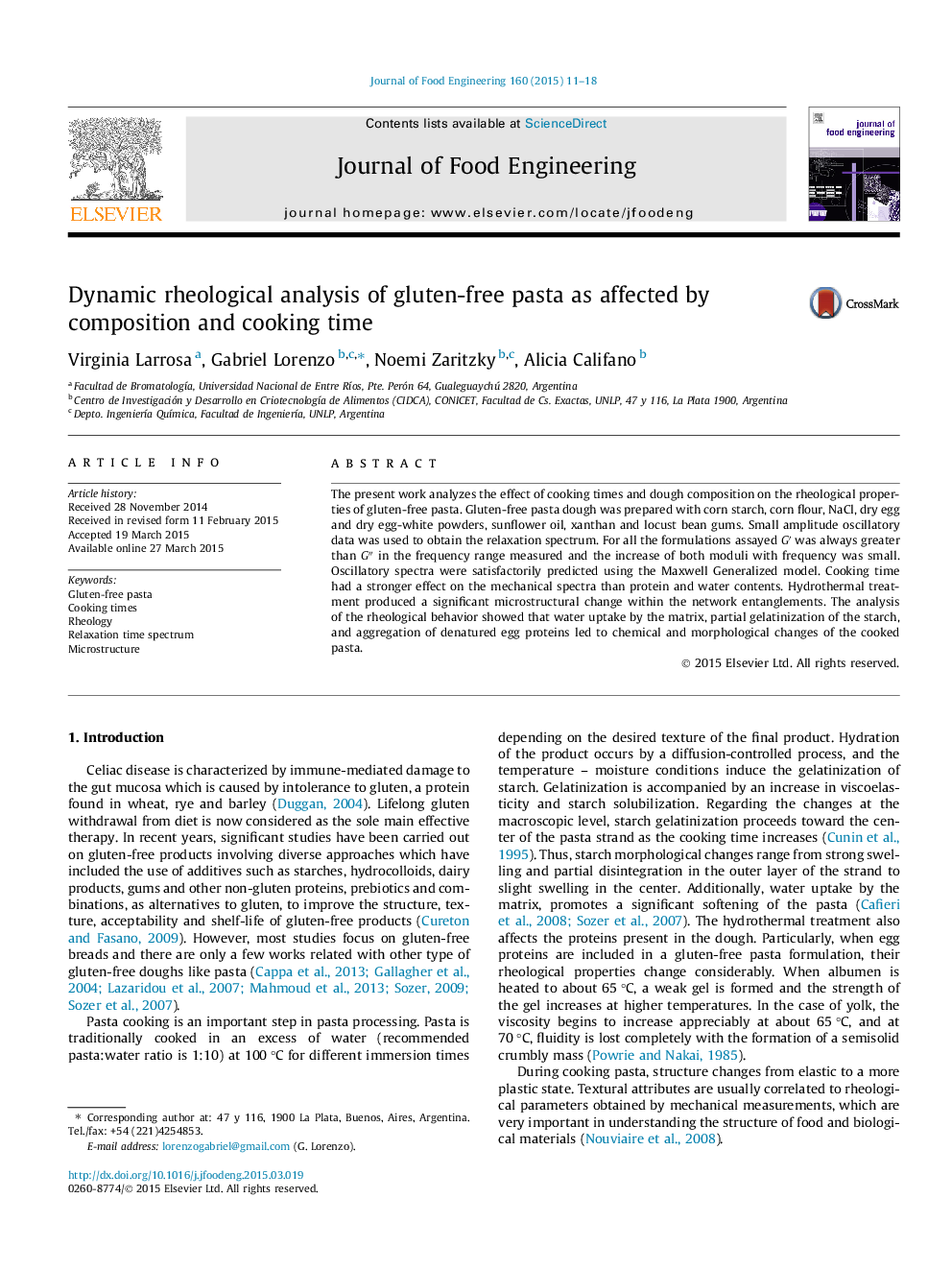| Article ID | Journal | Published Year | Pages | File Type |
|---|---|---|---|---|
| 222855 | Journal of Food Engineering | 2015 | 8 Pages |
•Frequency sweeps were used to obtain the relaxation spectrum of gluten-free pasta.•Cooked gluten-free pasta showed a gel-like behavior.•Oscillatory spectra were satisfactorily modeled using Maxwell’s model.•The inverse of the plateau modulus was used to obtain frequency sweep master curves.•Cooking time had a stronger effect on the mechanical spectra than formulation.
The present work analyzes the effect of cooking times and dough composition on the rheological properties of gluten-free pasta. Gluten-free pasta dough was prepared with corn starch, corn flour, NaCl, dry egg and dry egg-white powders, sunflower oil, xanthan and locust bean gums. Small amplitude oscillatory data was used to obtain the relaxation spectrum. For all the formulations assayed G′ was always greater than G″ in the frequency range measured and the increase of both moduli with frequency was small. Oscillatory spectra were satisfactorily predicted using the Maxwell Generalized model. Cooking time had a stronger effect on the mechanical spectra than protein and water contents. Hydrothermal treatment produced a significant microstructural change within the network entanglements. The analysis of the rheological behavior showed that water uptake by the matrix, partial gelatinization of the starch, and aggregation of denatured egg proteins led to chemical and morphological changes of the cooked pasta.
